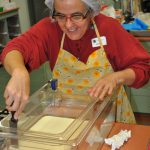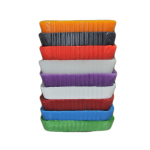The government in Australia requires that milk is pasteurised and milk products such as cheese be made from pastuerised milk. There are a few exceptions for some imported cheeses and a few Australian made cheeses such as King Saul and for raw goat milk in a few states across Australia.
However the law does not require milk produced from your own cows and goats for home consumption to be pasteurised.
The reason for pasteurisation is that raw milk is a rich product that supports the growth of a large number of microorganisms. The milk as it comes from the cow’s udder is almost sterile and it picks up numerous microbes on its journey through the cold chain. The environment where the milk is produced on the farm has numerous microbes: some may be pathogenic or disease producing, some may be spoilage and some may be beneficial bacteria required to make raw milk cheese.
Some of these microbes will find their way into the milk. Unless you have access to a laboratory you will not know which type and how many microbes are actually in the milk.
The temperatures used to make cheese requires the same milk to be held for up to a few hours at temperatures between 20°C and 40°C where any microbes (the good, bad or pathogenic) can grow and multiply. If a significant number of disease producing bacteria grow they can potentially cause serious illness to those persons consuming the cheese.
Time and temperature treatments for milk pasteurisation
Pasteurisation requires the milk to be heated to a time and temperature combination that will destroy the pathogenic microbes in the milk. Unfortunately the good or starter bacteria will also be destroyed. Starter cultures are added back into the pasteurised milk as a replacement for the ones destroyed by pasteurisation.
There are numerous pasteurisation time and temperature combinations available but the four most logical treatments for use by home cheesemakers, based on the equipment most people will have available are:
- 69°C for 1 minute
- 68°C for 2 minutes
- 66°C for 5 minutes
- 65°C for 10 minutes
By properly pasteurising milk you will:
- Destroy all pathogenic bacteria and make the milk or cheese safe for human consumption
- To destroy some of the spoilage bacteria and enzymes and therefore improve quality of the cheese
- Increase the shelf life of the milk
How to batch pasteurise at home:
In the batch pasteurisation process the milk is placed into a pot and heated, usually on a stove top to one of the required temperatures. Some people will do this by placing the pot directly on the heat source (eg stove top) and others will place the milk in a double boiler.
The latter has a less severe effect on the milk and is the preferred approach. The milk will need to be stirred continuously but very gently while it is being heated. When the required temperature is reached heating should be stopped.
A warning note: The above time temperatures are the minimum required to pasteurise the milk for making cheese however additional time and temperatures are also not desirable as they may cause some damage to the milk constituents and make cheesemaking more difficult.
When the maximum temperature is reached, the milk will need to be held for the required time, and cooling commenced immediately. Do not continue with a higher or longer heat treatment thinking it is better. Be aware that the pot and the stove top will also contain residual heat and this may alsocause the milk temperature to continually rise past the minimum temperature.
When the holding time is reached continue cooling the milk straight away, do not delay the cooling so be prepared. You will need to have a supply of cold tap water or refrigerated water to start the cooling process. A sink, a bucket or an outer boiler can be used to hold the cold water. Ice or refrigerated water can be used, it is beneficial but it is not necessary.
You will find that the cooling water in the outer jacket will increase in temperature and will need to be discarded for a new batch of cooling water. Most damage to the milk is done while it is above the 55°C temperature, so it is desirable to cool the milk down below this temperature as quickly as possible.
Continue cooling the milk until it reaches the desired cheesemaking temperature. You are now ready to start making cheese. The same time and temperature standards apply to milk from cow, goat, sheep and buffalo.
Pasteurisation will cause calcium precipitation so it is helpful to add calcium chloride to the milk as soon as it is cooled to cheesemaking temperature. Pasteurisation may extend the time taken to coagulate the milk, give a softer curd and make drainage of moisture from the curd more difficult.



